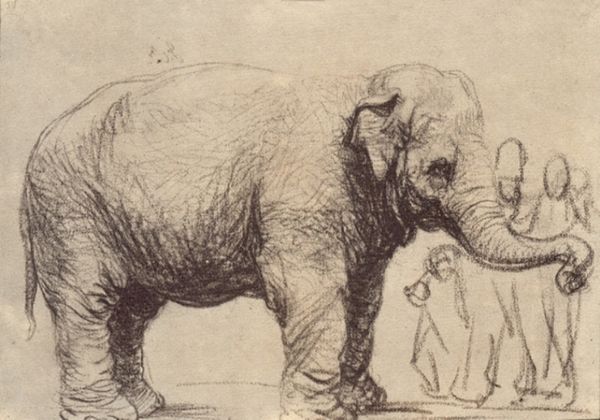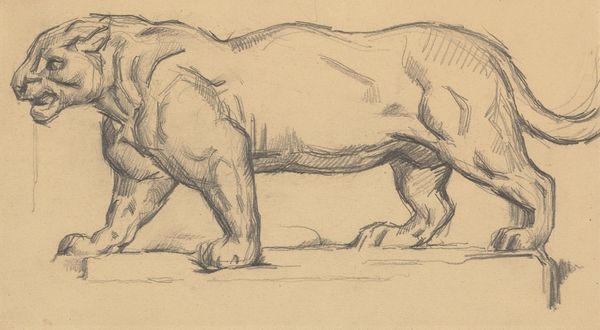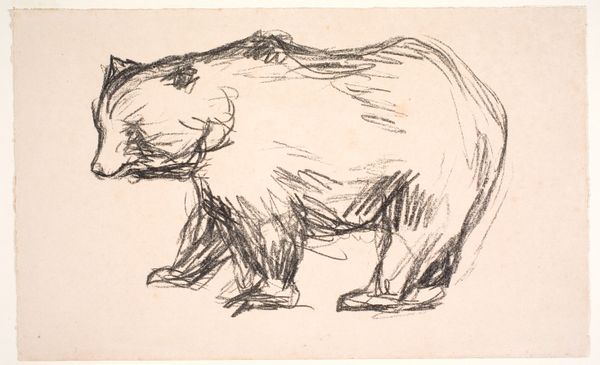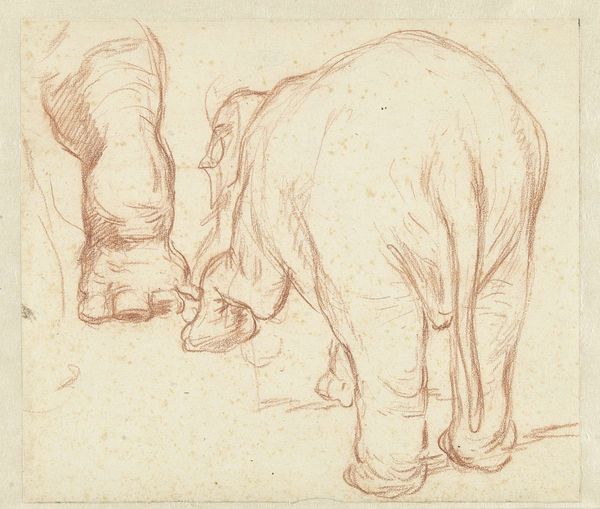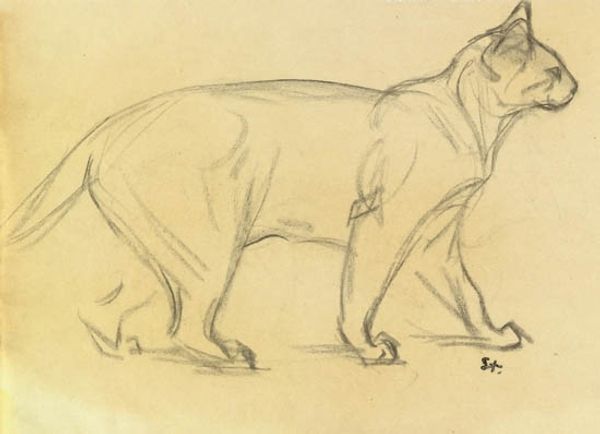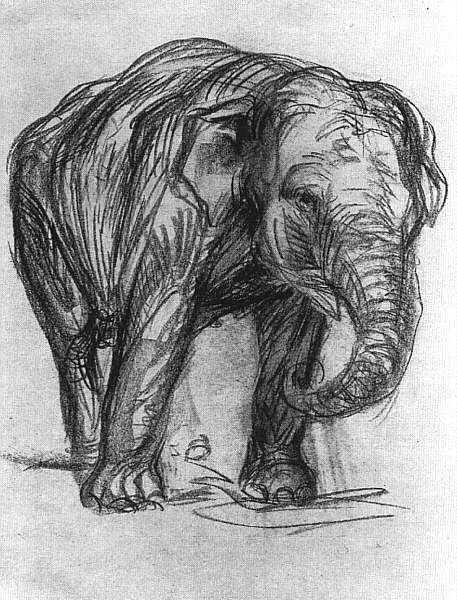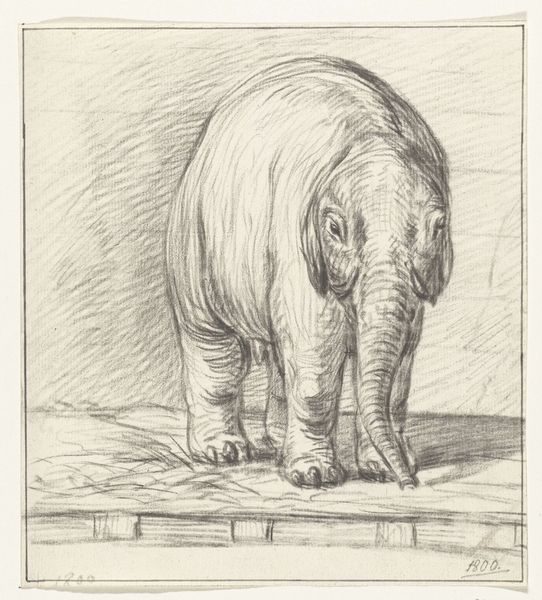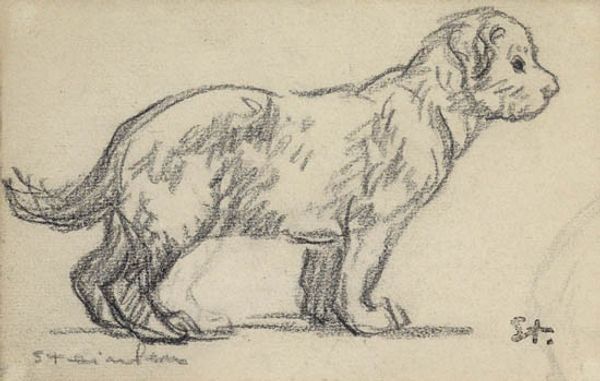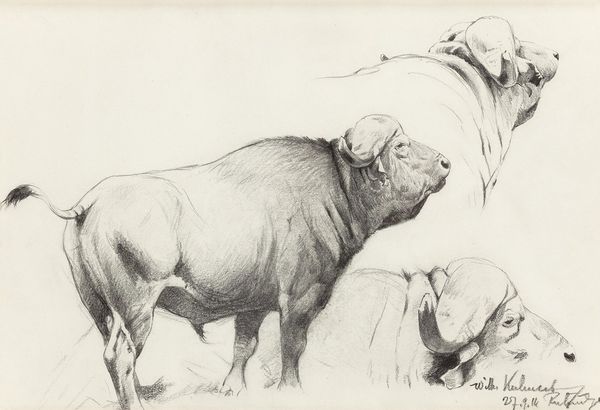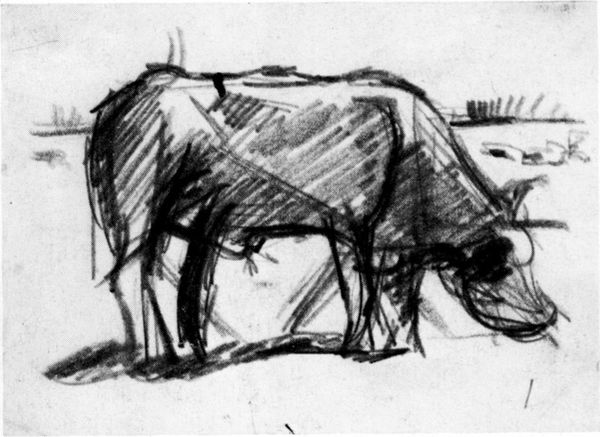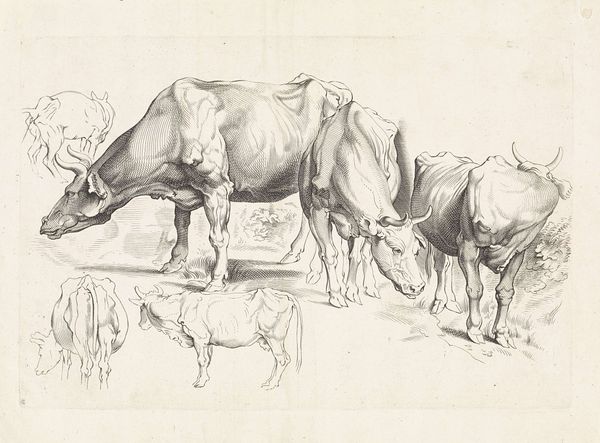
drawing, pencil, graphite
#
pencil drawn
#
drawing
#
baroque
#
animal
#
pencil sketch
#
charcoal drawing
#
figuration
#
pencil drawing
#
sketch
#
pencil
#
line
#
graphite
#
realism
Copyright: Public domain
Editor: So, this is Rembrandt van Rijn’s "Hansken the Elephant," a pencil drawing from 1637. It’s striking how he captures the animal's bulk with such simple lines. What do you see in this piece? Curator: Immediately, I'm drawn to the labor invested in observing and translating the animal's form through readily available, affordable materials: graphite and paper. What was the process? How long did he study the elephant? And where did the paper come from? Remember that in 17th-century Netherlands, paper was increasingly available due to industrial advancements, playing a crucial role in art, communication and documentation. It challenges the hierarchy placing painting above drawing. Editor: That's fascinating! I hadn't considered the material accessibility of the work. Does the subject—an elephant— factor into this at all? Curator: Absolutely! An elephant in the Netherlands during this period wasn't a common sight. Hansken was a traveling circus animal, a spectacle for public consumption. Consider the socio-economic context: people are paying to view something that’s imported from abroad and paraded for its captors' benefit. How does Rembrandt's choice of such a subject reflect the growing commodification of exoticism and how would a print reproduction contribute to the phenomena? Editor: It definitely gives me a different perspective, thinking about the socio-economic implications embedded in the drawing. So much for a humble pencil sketch! Curator: Precisely. It allows us to appreciate Rembrandt's skill not just in terms of artistic representation, but in using accessible materials to capture a cultural phenomenon rooted in labor, economics, and expanding worldviews. The network of people needed for an elephant performance in Amsterdam during the Baroque period should be included with the analysis of this work. Editor: This makes me think about all art differently – connecting it to material realities, consumption and the means of making art itself! Curator: It's a good first step. Keep looking for these connections!
Comments
No comments
Be the first to comment and join the conversation on the ultimate creative platform.
